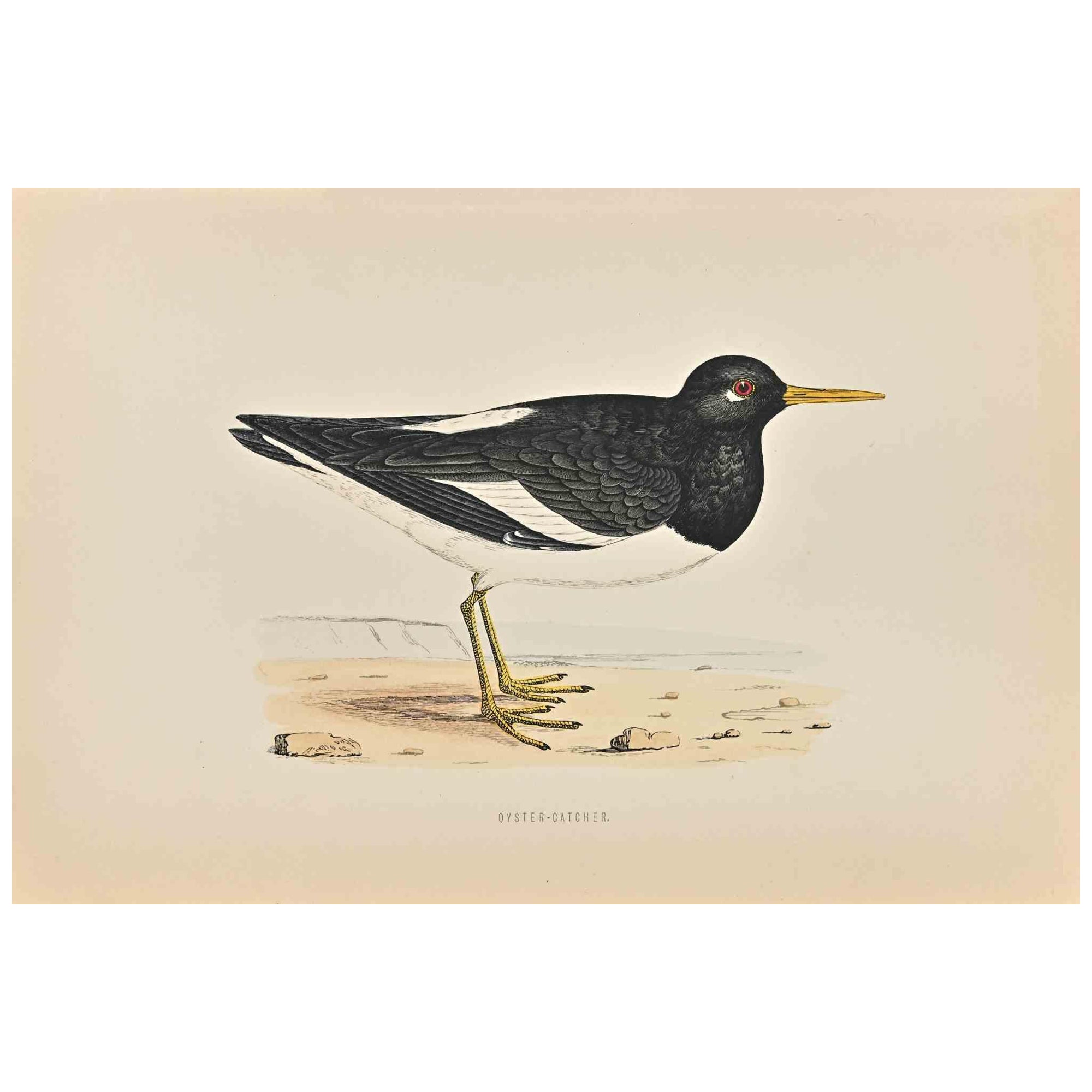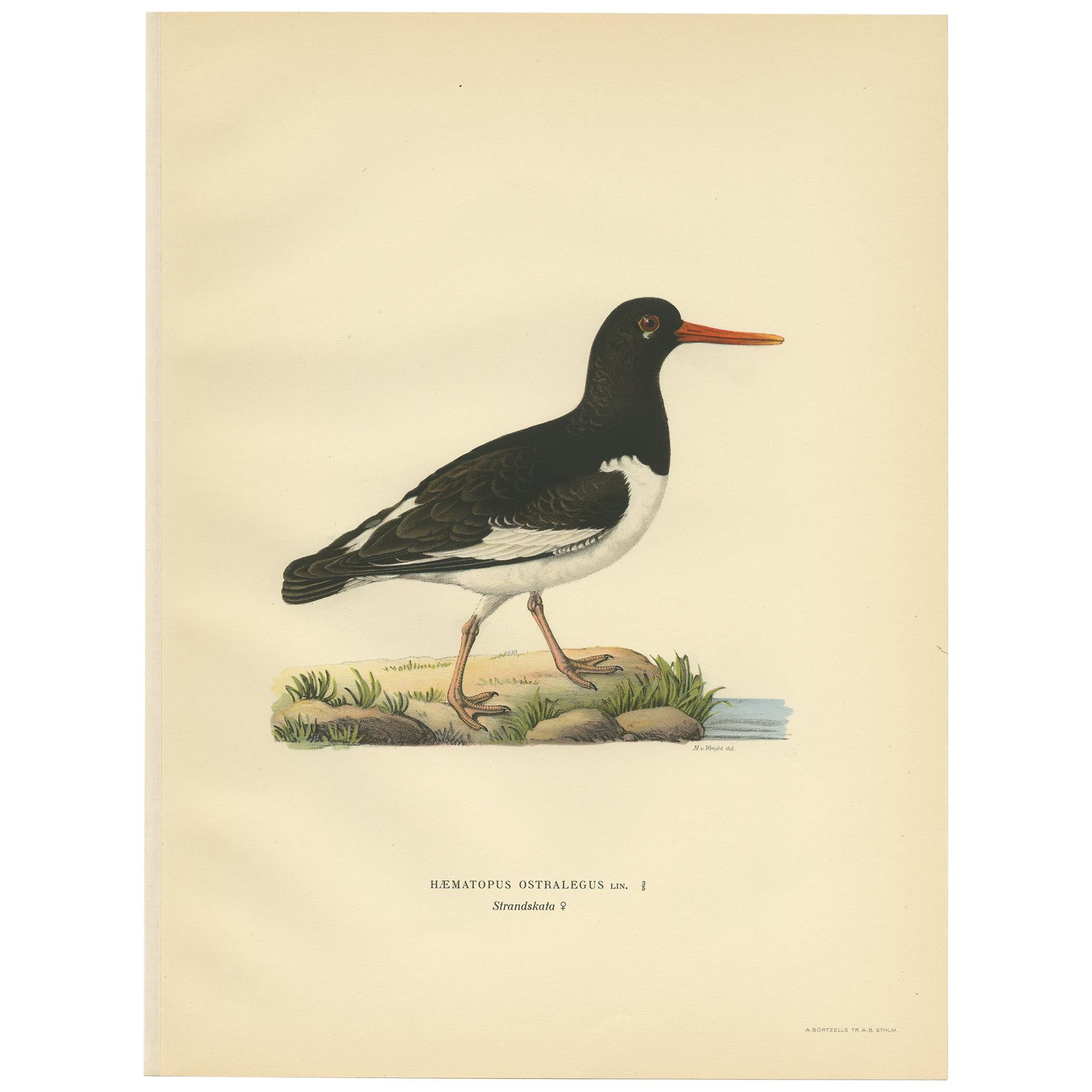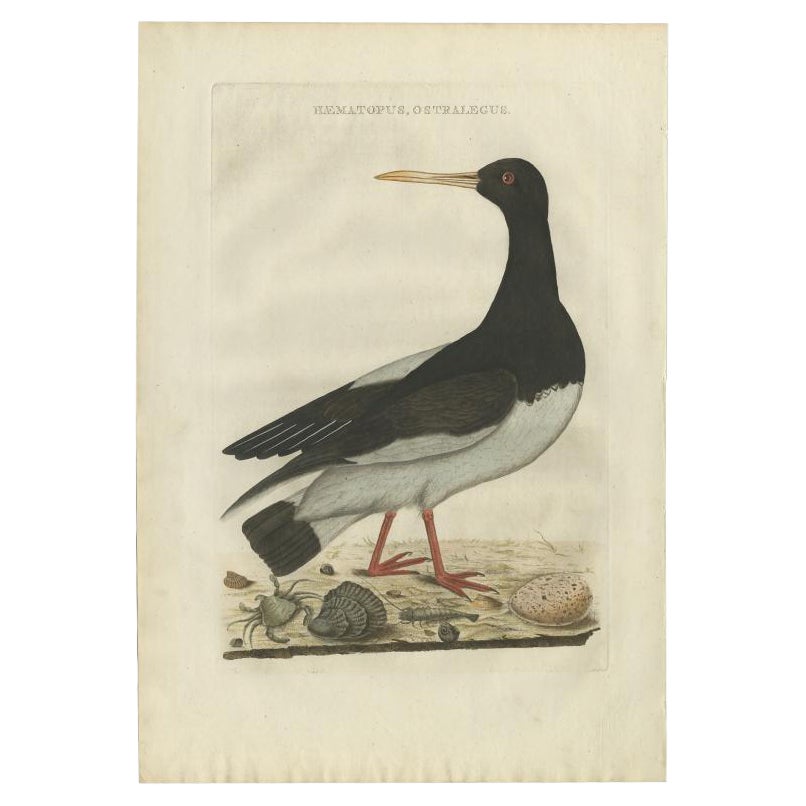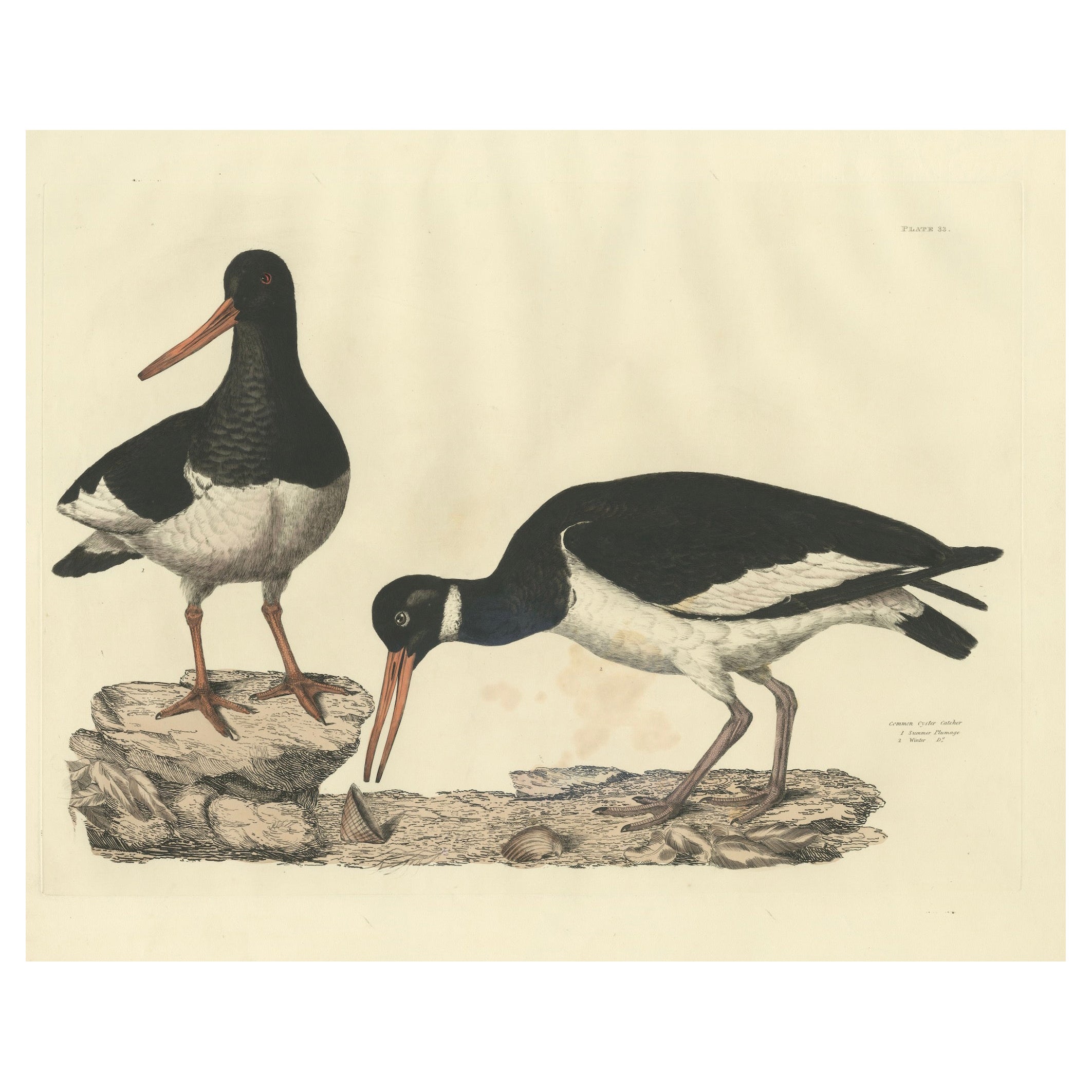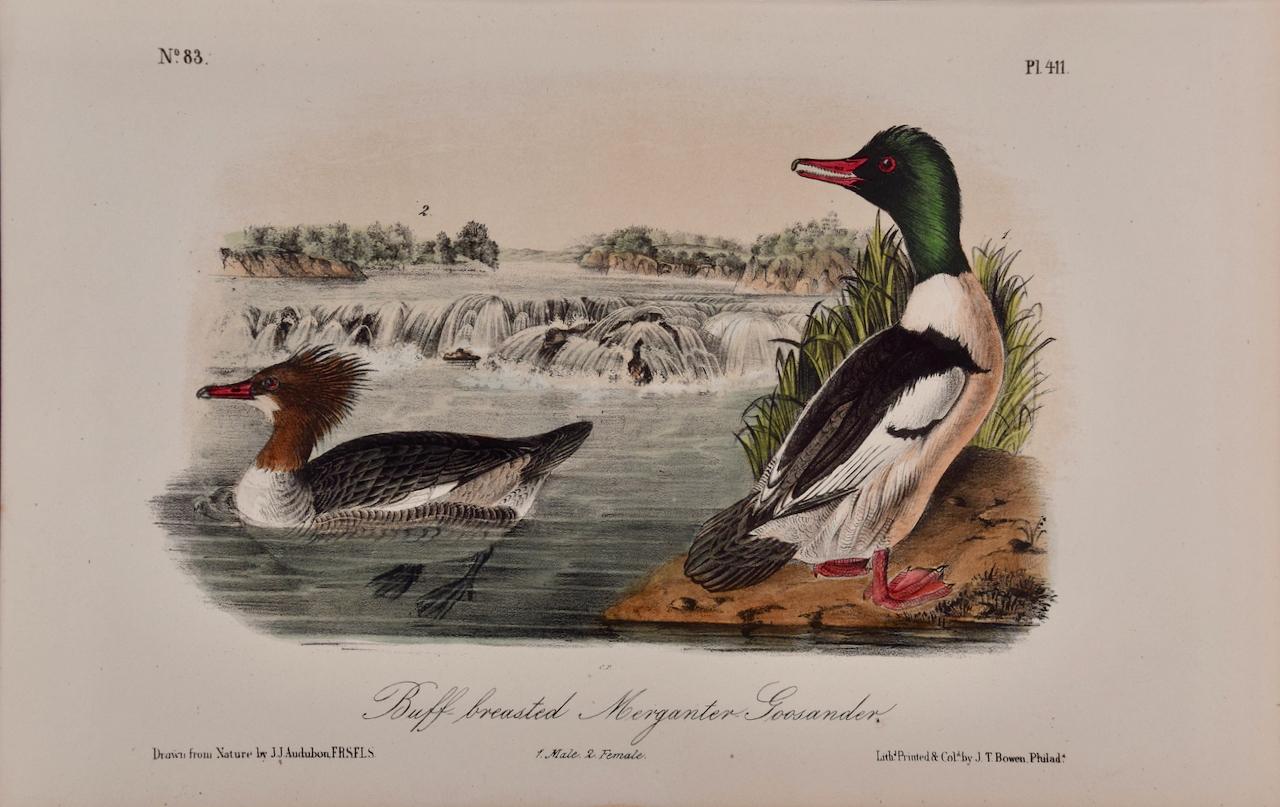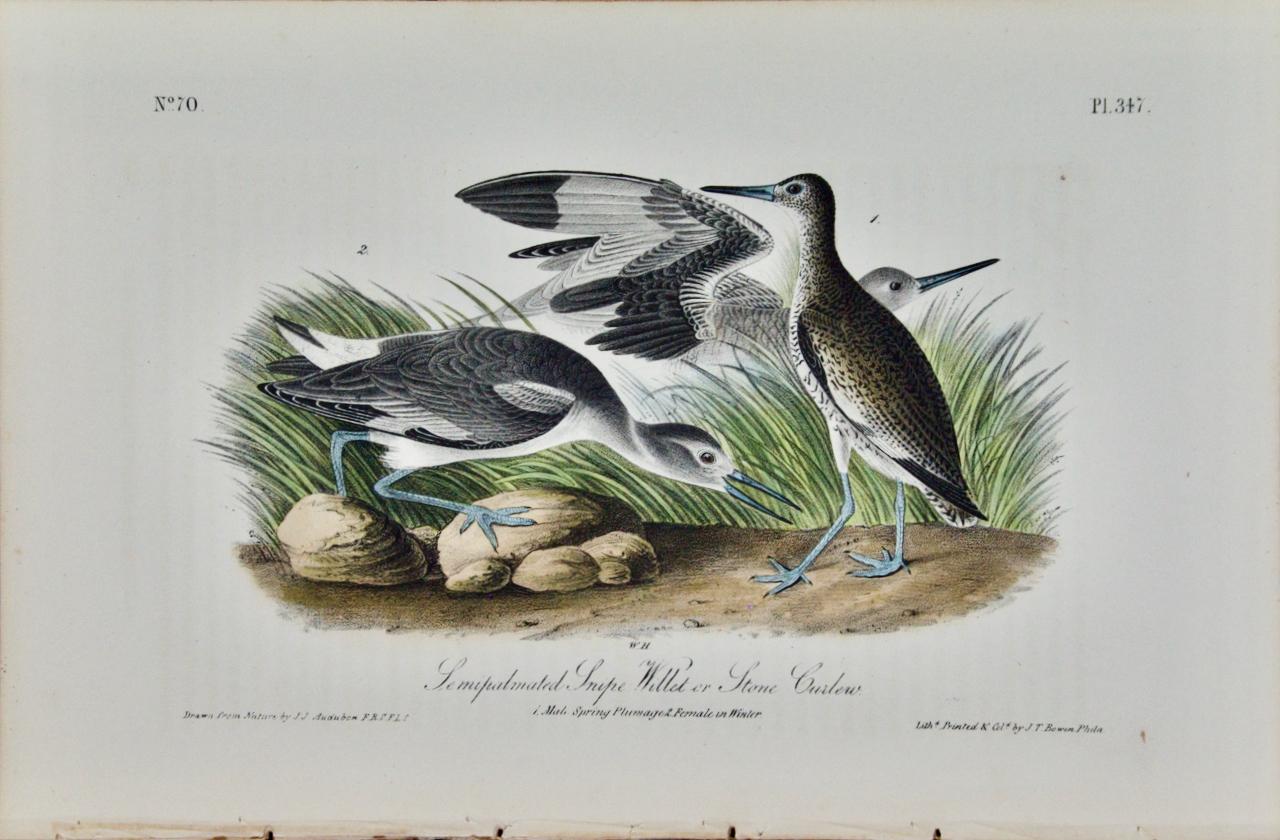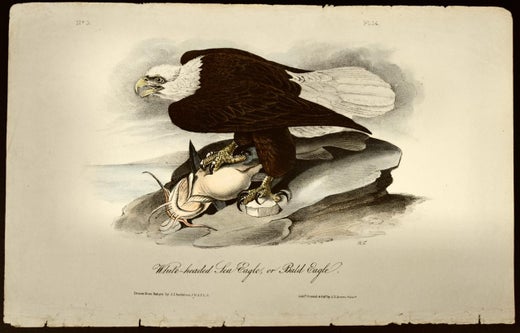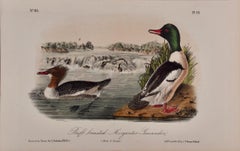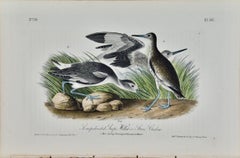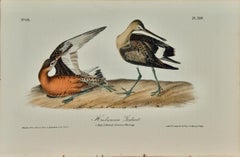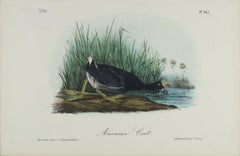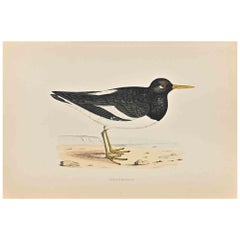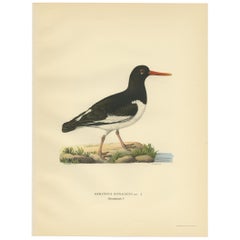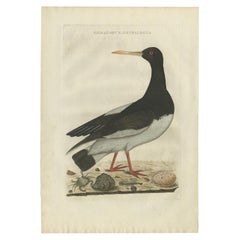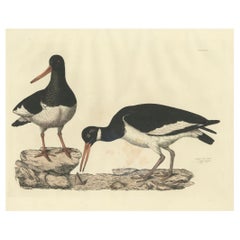This is an original first octavo edition John James Audubon hand-colored royal octavo lithograph entitled "American Oyster Catcher, Male", No. 65, Plate 324, from Audubon's "Birds of America". It was lithographed, printed and colored by J. T. Bowen and published in Philadelphia between 1840-1844. It depicts an adult male American Oyster Catcher standing on land on the bank of a body of water. A small diagram of the bird's beak is present in the lower left.
This is an excerpt from Audubon's own description of the bird in the text of his publication:
"Our Oyster-catcher has a very extensive range. It spends the winter along the coast from Maryland to the Gulf of Mexico, and being then abundant on the shores of the Floridas, may be considered a constant resident in the United States. At the approach of spring, it removes toward the Middle States, where, as well as in North Carolina, it breeds. It seems scarcer between Long Island and Portland in Maine, where you again see it, and whence it occurs all the way to Labrador, in which country I found that several were breeding in the month of July. Unless in winter, when these birds assemble in parties of twenty-five or thirty individuals, they are seldom met with in greater numbers than from one to four pairs, with their families, which appear to remain with the parent birds until the following spring. It is never found inland, nor even fir up our largest rivers, but is fond of remaining at all times on the sandy beaches and rocky shores of our salt-water bays or marshes. In Labrador, I met with it farther from the open sea than in any other part, yet always near salt-water.
Shy, vigilant, and ever on the alert, the Oyster-catcher walks with a certain appearance of dignity, greatly enhanced by its handsome plumage and remarkable bill. If you stop to watch it, that instant it sounds a loud shrill note of alarm; and should you advance farther towards it, when it has neither nest nor young, off it flies quite out of sight. Few birds, indeed, are more difficult to be approached, and the only means of studying its habits I found to be the use of an excellent telescope, with which I could trace its motions when at the distance of a quarter of a mile, and pursuing its avocations without apprehension of danger. In this manner I have seen it probe the sand to the full length of its bill, knock off limpets from the rocks on the coast of Labrador, using its weapon sideways and insinuating it between the rock and the shell like a chisel, seize the bodies of gaping oysters on what are called in the Southern States and the Floridas "Racoon oyster-beds," and at other times take up a "razor-handle" or solen, and lash it against the sands until the shell was broken and the contents swallowed. Now and then they seem to suck the sea-urchins, driving in the mouth, and introducing their bill by the aperture, without breaking the shell; again they are seen wading up to their bodies from one place to another, seizing on shrimps and other crustacea, and even swimming for a few yards, should this be necessary to enable them to remove from one bank to another without flying. Small crabs, fiddlers, and sea-worms are also caught by it, the shells of which, in a broken state, I have found in its gizzard in greater or less quantity. Frequently, while on wet sea-beaches, it pats the sand, to force out the insects; and in one instance I saw an individual run from the water to the dry sand, with a small flounder in its bill, which it afterwards devoured."
This original Audubon lithograph is in very good condition. The sheet measures 6.75" high by 10.25" wide.
John James Audubon (1785-1851) was a naturalist and artist. He was initially unsuccessful financially prior to the publication of his famous work “The Birds of America”, spending time in debtor’s prison, once stabbing a disgruntled investor in self-defense. However, his obsession with birds and art motivated him to persist in his goal of documenting every bird in America via his watercolor paintings and publishing his works for all to enjoy. Audubon's first illustrations were published in a large elephant folio size. Due to their expense they were purchased in rather small numbers by the wealthy. To reach a larger audience, Audubon, with the help of his sons and J. T. Bowen, published a smaller octavo sized lithograph version, which were much more affordable.
With the success of his bird projects, Audubon then turned his attention to four-legged animals. He explored the Missouri River in 1843 sketching the four-legged animals he encountered in their natural setting. His expedition covered some of the same regions recently explored by Lewis and Clark, traveling from present day Alaska to Mexico. Audubon realized that this was an opportunity to document these animals in the still relatively pristine American wilderness, before man encroached on their environment.
Between 1845 and 1848, Audubon and his sons John Woodhouse Audubon and Victor Gifford Audubon produced a set of elephant folio sized lithographs that were primarily engraved and hand colored by J. T. Bowen in Philadelphia. The publication, which included text descriptions of the animals was published 3 years before Audubon died. As with the birds, this was followed by a three-volume set of 155 octavo-sized plates entitled “The Quadrupeds of North America” completed and published by Audubon’s sons, John, Jr. and Victor.
Audubon prints continue to be popular and a wise investment. The double elephant folio set “The Birds of America” have sold at auction for as much as $8.8 million, and individual plates may sell for six figures. The beautiful octavo sized plates are not as expensive, but becoming more sought after, as the folio bird plates become unattainable to all but the very wealthy.
